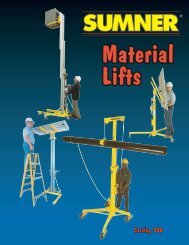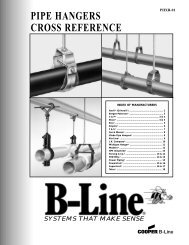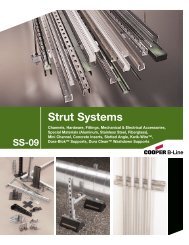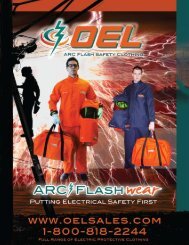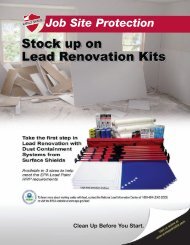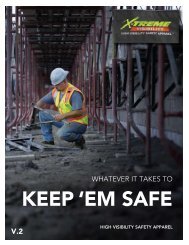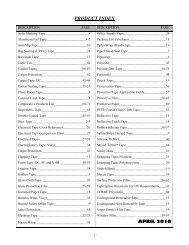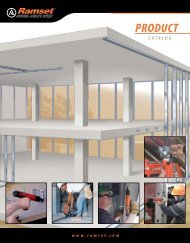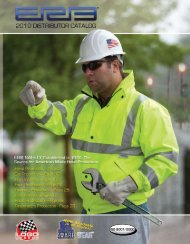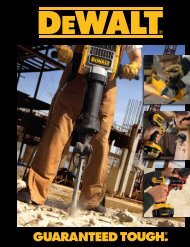Cooper B-Line Seismic Restraints - Dixie Construction Products
Cooper B-Line Seismic Restraints - Dixie Construction Products
Cooper B-Line Seismic Restraints - Dixie Construction Products
Create successful ePaper yourself
Turn your PDF publications into a flip-book with our unique Google optimized e-Paper software.
TRAPEZE BRACING<br />
Footnotes<br />
1. It is not necessary to install both transverse braces and longitudinal braces on the same trapeze support. For<br />
example, it is common to install transverse braces on trapezes every 40 ft., and then install both transverse and<br />
longitudinal braces every 80 ft.<br />
2. The “structure connection type” is the brace anchorage requirement. See pages 23 thru 38 for brace attachment<br />
details.<br />
3. Any combination of brace interval and structure connection type (anchor size) may be used for a given system<br />
weight and support span. For example, it is not necessary to use structure connection type II for both transverse<br />
and longitudinal braces. Often longitudinal braces are spaced at a greater distance, and would require a larger<br />
anchor when attaching to structure.<br />
4. The bracing intervals listed are maximums. They are rounded down to facilitate construction. For example, it is<br />
common to use a longitudinal bracing interval that is twice the transverse spacing.<br />
5. The rod load indicates the maximum tension in the rod due to gravity and 1 /3 of the horizontal seismic force<br />
applied in the vertical direction for “unbraced trapezes”. For trapezes with braces attached, the rod load also<br />
includes additional seismic loads. Note that the rod loads at braced locations are significantly higher than<br />
unbraced trapezes. Select a hanger rod attachment detail from pages 39 thru 56 that meets the load<br />
requirements.<br />
6. The minimum rod size is given for both braced and unbraced trapezes. Due to the additional seismic forces at<br />
braced trapezes, the rod sizes may be significantly larger. Be sure to follow the guidelines on page 57 to see if a<br />
rod stiffener is required, due to the length of the rod. Rod stiffeners, if necessary, are only required at braced<br />
locations. Unbraced trapezes never require rod stiffeners.<br />
7. <strong>Seismic</strong> forces for charts in Appendix 2 (pages 109 - 144) include 1 /3 of horizontal seismic force applied in<br />
vertical direction.<br />
8. Charts in Appendix 2 (pages 109 - 144) are for the seismic force levels (%g) listed on those<br />
pages.<br />
COOPER B-<strong>Line</strong><br />
509 West Monroe Street<br />
Highland, Illinois 62249<br />
Phone: 800-851-7415<br />
Fax: 618-654-1917<br />
Date:<br />
Page No.<br />
Sheet Number:<br />
6 - 2 - 06<br />
145<br />
of<br />
Raafat S. Aboulhosn<br />
Structural Engineer S 3913



